Allegiance United Kingdom Role Commanding officer Name Oliver Leese Books Cacti | Years of service 1914–1947 | |
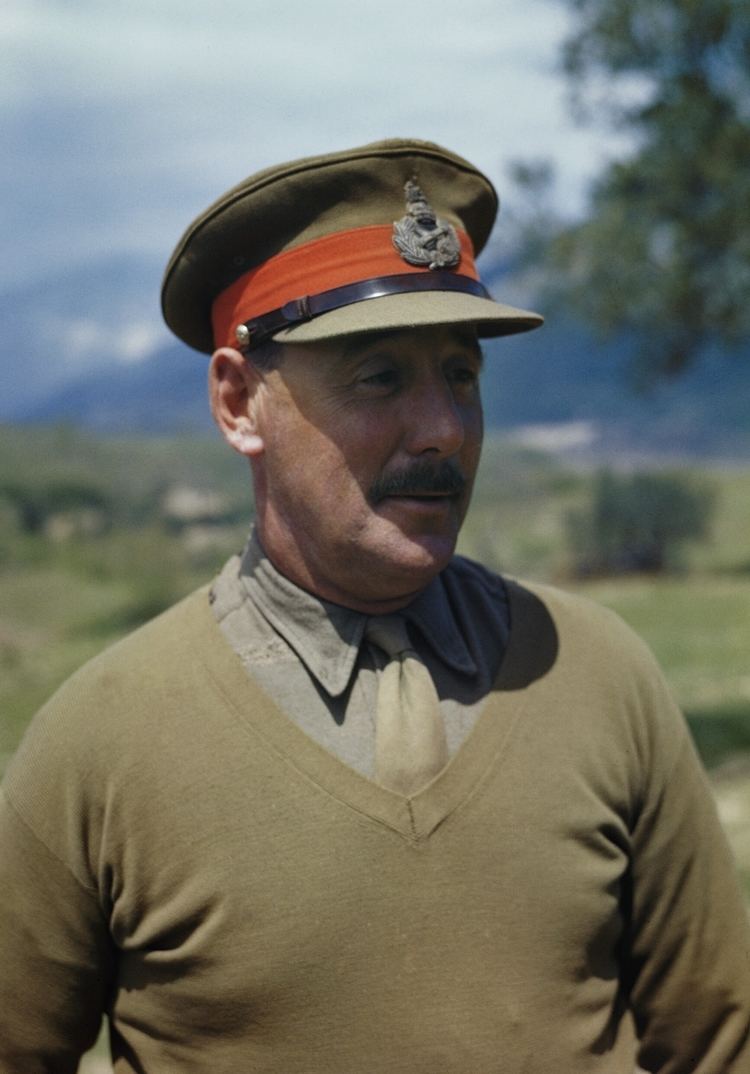 | ||
Commands held 1945 Eastern Command1944 Allied Land Forces South-East Asia1943 British Eighth Army1942 XXX Corps1941 (Jun) Guards Armoured Division1941 (Feb) 15th (Scottish) Infantry Division1936 1st Battalion, Coldstream Guards Battles/wars World War IWorld War II Awards 1945 Commander, Legion of Merit1943 Knight Commander, Order of the Bath (KCB)1942 Companion, Order of the Bath1940 Commander of the Order of the British Empire (CBE)1917 Mentioned in dispatches (twice)1916 Distinguished Service OrderLegion d'HonneurCroix de GuerreVirtuti Militari Similar People Harold Alexander - 1st Earl A, Richard McCreery, Mark W Clark, Albert Kesselring, Heinrich von Vietinghoff | ||
Battles and wars World War I, World War II | ||
Lieutenant general sir oliver leese no sound
Lieutenant General Sir Oliver William Hargreaves Leese, 3rd Baronet, (27 October 1894 – 22 January 1978) was a senior British Army officer who saw distinguished active service during both the world wars. He is most notable during the Second World War for commanding XXX Corps in North Africa and Sicily, serving under General Sir Bernard Montgomery, before going on to command the Eighth Army in the Italian Campaign throughout most of 1944.
Contents
- Lieutenant general sir oliver leese no sound
- General sir oliver leese s cacti 1958
- Early life and military career
- Between the wars
- Second World War
- Post war
- References

General sir oliver leese s cacti 1958
Early life and military career
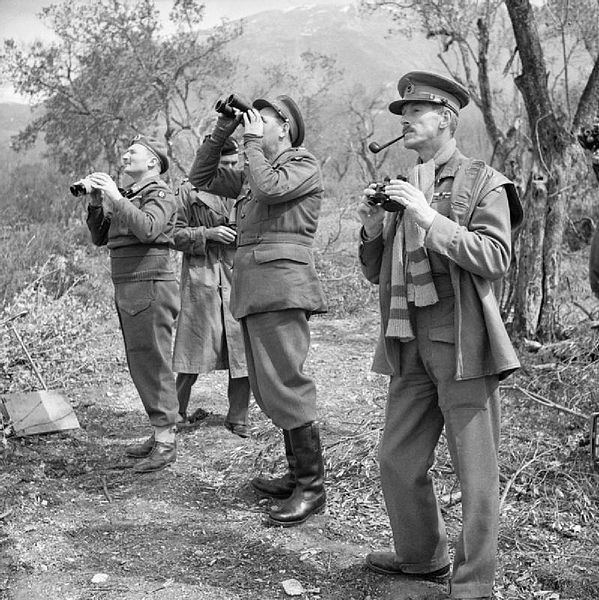
Oliver William Hargreaves Leese was born on 27 October 1894 at St. Ermin's, Westminster, London, the first of four children of William Hargreaves Leese (later 2nd Baronet), a barrister, and Violet Mary Sandeman. He was educated at Ludgrove and Eton. In 1909, while at Eton, he joined the Officers' Training Corps (OTC).
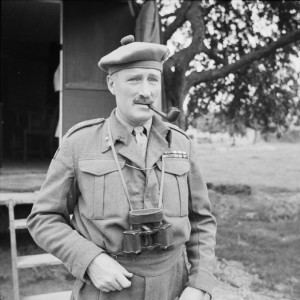
Early in the First World War, he joined the British Army and was gazetted in the Special Reserve of Officers as a second lieutenant into the Coldstream Guards on 15 September 1914, later gazetted in the Land Forces on 15 May 1915. Despite receiving only five weeks of training, Leese was sent to France in mid-October 1914 and was posted to the 3rd Battalion, Coldstream Guards, part of the 4th (Guards) Brigade of the 2nd Division, near Ypres, Belgium. However, on 20 October, a week before Leese's 20th birthday, he was wounded, the first of three he was to receive during the war, after being hit in the back by shrapnel.
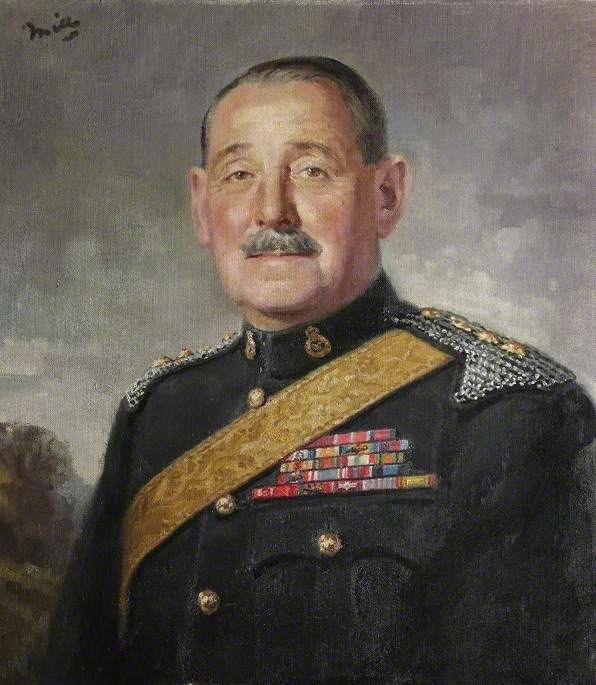
He returned to England for treatment, and in 1915 returned to France, serving this time with the 2nd Battalion, Coldstream Guards, also part of the 4th Brigade, 2nd Division, where he experienced trench warfare throughout most of the year, in July gaining a second wound, receiving multiple wounds to the face, but he remained on duty. In September his battalion, now transferred to the 1st Guards Brigade of the newly created Guards Division, fought in the Battle of Loos and, on 3 October, Leese was promoted to lieutenant. The next few months were spent holding the trenches, with no major engagements taking place.
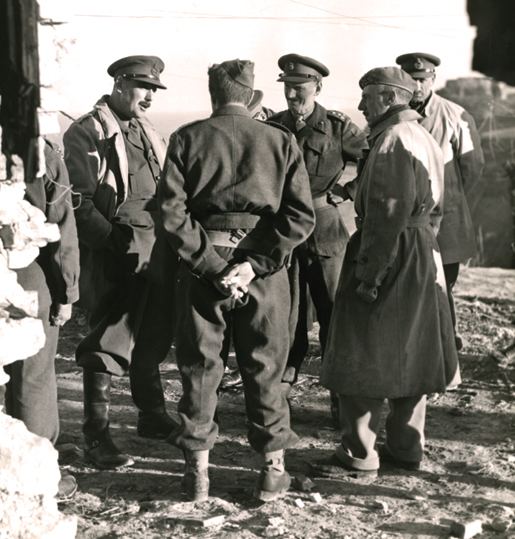
Leese was wounded for the third time during the Somme offensive in September 1916, an action in which he was mentioned in despatches and awarded the Distinguished Service Order (DSO). The citation to his DSO, which was gazetted in November 1916, read:
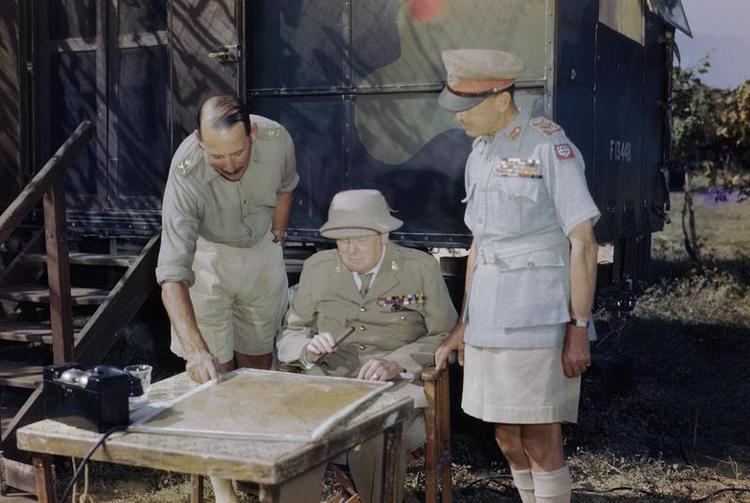
For conspicuous gallantry in action. He led the assault against a strongly held part of the enemy's line, which was stopping the whole attack. He personally accounted for many of the enemy and enabled the attack to proceed. He was wounded during the fight.
Between the wars
After the war, he remained in the British Army, being promoted captain in 1921, and attending the Staff College, Camberley from 1927 to 1928. Among his many fellow students in the junior division there were a large number of future general officers, such as Robert Bridgeman, Eric Hayes, Angus Collier, Evelyn Barker, Philip Christison, Ronald Penney, Stephen Irwin, Eric Dorman-Smith, Reginald Savory, William Bishop, John Whiteley, George Surtees, Wilfred Lloyd, Stanley Kirby, John Hawkesworth, Charles Norman, Colin Jardine, Edmund Beard, Clement West, Christopher Woolner, Alfred Curtis, Oliver Edgcumbe and Eric Nares. Returning briefly to his battalion after graduation, in November 1929 he was appointed as brigade major to the 1st Infantry Brigade (Guards) and was formally promoted to major a few days later. He was promoted to brevet lieutenant colonel in July 1933.
On 18 January 1933 Leese married a granddaughter of Sir Baldwyn Leighton, 8th Baronet, Margaret Alice (died 1964), daughter of Cuthbert Leighton (recte Leicester-Warren), DL, JP, (1877–1954), of Tabley House, Knutsford, by Hilda Margaret Davenport; they had no children. Lady Leese's brother was the last of the line to own the Tabley estate which he left on his death in 1975 to the National Trust.
From 1932 to 1938 Leese held a number of staff appointments and was promoted to lieutenant colonel in December 1936, brevet colonel in September 1938 and colonel in October 1938. In September 1938 he was posted to India to be a GSO1 instructor at the Staff College, Quetta. He had succeeded to the baronetcy on his father's death on 17 January 1937.
Second World War
Leese returned to England from India in March 1940, six months after the outbreak of the Second World War. It had been planned for him to command a brigade in Norway but with the German Army's invasion of Western Europe in May, he was sent to join General Lord Gort's headquarters as Deputy Chief of Staff of the British Expeditionary Force (BEF). He evacuated from Dunkirk with Gort on 31 May. On his return to the United Kingdom Leese was ordered to form and train a large brigade group, the 29th Infantry Brigade. In December 1940 he was appointed acting major general and given command of the West Sussex County Division, which included the 29th Brigade. A month later he was moved to become General Officer Commanding (GOC) of the 15th (Scottish) Infantry Division, then stationed in East Anglia. His rank was upgraded to temporary major general in November and was made substantive in December. In June 1941 he became GOC of the newly created Guards Armoured Division during its formation and training. "A forceful personality, Leese proved extremely energetic in getting what he wanted from the War Office and then drove his men hard to create a thoroughly well organised division within a relatively short time".
In September 1942 he was sent at the request of the British Eighth Army commander, Lieutenant General Bernard Montgomery, to North Africa to assume command, as an acting lieutenant general, of the Eighth Army's XXX Corps. Montgomery had formed a good opinion of Leese when he had instructed him at the Staff College, Camberley in 1927 and 1928 and had also been impressed by his work at GHQ in France. Leese commanded XXX Corps for the rest of the campaign which ended with the Axis surrender in May 1943 in Tunisia. He was mentioned in despatches for his services in North Africa. XXX Corps then took part in the Allied invasion of Sicily in July 1943 before returning to the United Kingdom after the Sicily campaign, which ended in August, to prepare for the planned invasion of Northwest Europe, scheduled for the spring of 1944. Leese was promoted to temporary lieutenant general in September.
On 24 December 1943, however, Leese received a telegram ordering him to Italy to succeed Montgomery as Eighth Army commander as Montgomery was to return to the United Kingdom in January 1944 to prepare for the Allied invasion of Normandy. Leese commanded the Eighth Army at the fourth and final battle of Monte Cassino in May 1944 (when the bulk of the Eighth Army was switched in secret from the Adriatic coast to Cassino to strike a joint blow with the U.S. Fifth Army under Lieutenant General Mark W. Clark, who Leese disliked working alongside) and for Operation Olive on the Gothic Line later in 1944. His rank of lieutenant-general was made permanent in July 1944.
In September 1944 he was appointed to succeed George Giffard as the Commander-in-Chief (C-in-C) of Eleventh Army Group and assumed command in November, by which time the Army Group had been renamed Allied Land Forces, South-East Asia (ALFSEA). Leese was replaced as commander of the British Eighth Army by Lieutenant General Sir Richard McCreery. Leese viewed the existing command structure in South-East Asia as inefficient, and proceeded to appoint former members of his Eighth Army staff. The methods of the two staffs differed and the newcomers were resented. As Slim expressed it in his memoirs, "His staff, which he brought with him... had a good deal of desert sand in its shoes, and was rather inclined to thrust Eighth Army down our throats." Leese commanded three groups: the Northern Combat Area Command under his American subordinate, Lieutenant General Dan Sultan, the Fourteenth Army under Lieutenant General Sir William Slim in central Burma and further south in the Arakan, Indian XV Corps under Lieutenant General Philip Christison, his Staff College classmate. Until the end of the year, he fought a successful campaign which led to the capture of Rangoon by an amphibious landing (Operation Dracula) in early May 1945.
Slim had turned the Fourteenth Army into an effective military force and had commanded a highly successful campaign from the relief of Imphal to the recapture of Rangoon and the destruction of the Japanese forces in Burma. Leese believed that Slim was very tired (he had asked for leave once Rangoon had been taken) and proposed to the Supreme Commander South East Asia, Louis Mountbatten and the Chief of the Imperial General Staff (CIGS), Field Marshal Sir Alan Brooke, that he should be replaced by Philip Christison, who had experience in amphibious warfare and so would be well suited to leading the army in the planned seaborne landings in Malaya, leaving Slim to take over the new Twelfth Army, with the less demanding task of mopping up in Burma. Leese misread the reactions of Brooke and Mountbatten and having then met Slim to discuss the proposals, came away believing Slim had agreed to them. In fact, Slim reacted by telling his staff he had been sacked and wrote to Leese and General Sir Claude Auchinleck, the Commander-in-Chief India, to say he would refuse the new post and resign from the army in protest. Once the news circulated within the Fourteenth Army, mutinies and mass resignations of officers were threatened. Leese was obliged to reinstate Slim when Mountbatten refused to support him, even though he had authorised the original proposals. Mountbatten subsequently approached Alan Brooke (who had always doubted Leese's suitability for the role) and they agreed that Leese should be removed. He was succeeded by Slim.
Post-war
None of the protagonists in the Slim affair show up well in retrospect. Richard Mead in Churchill's Lions suggests that Leese was naive, Slim petulant and Mountbatten devious. Leese's career suffered and he returned to the United Kingdom to be GOC-in-C Eastern Command, a significant downward move having been one of only three army group commanders in the British Army. His promotion to full general is believed to have been blocked by Mountbatten and he retired from the army in January 1947. Leese became a noted horticulturist, writing books on cacti and keeping a well noted garden at his house, Lower Hall in Worfield, Shropshire. Although a keen cricketer, he had only modest success as a batsman in the 1914 Eton XI and was relegated to 12th man for that year's Eton v Harrow match but was President of the Marylebone Cricket Club in 1965. He served as High Sheriff of Shropshire in 1958. Leese was a guest on the April 10, 1960 "What's My Line" game show. Following amputation of his right leg in 1973, Leese moved into Wales into a house called Dolwen at Llanrhaeadr-ym-Mochnant, near Oswestry. He died there after a heart attack on 22 January 1978, aged 83 and was buried at Worfield parish church.
